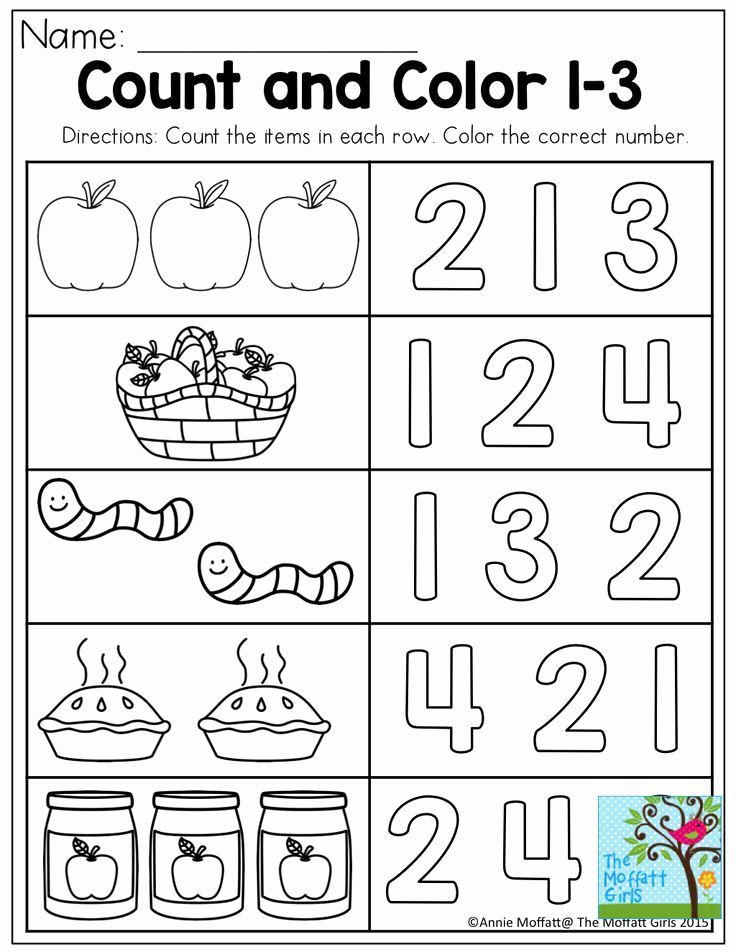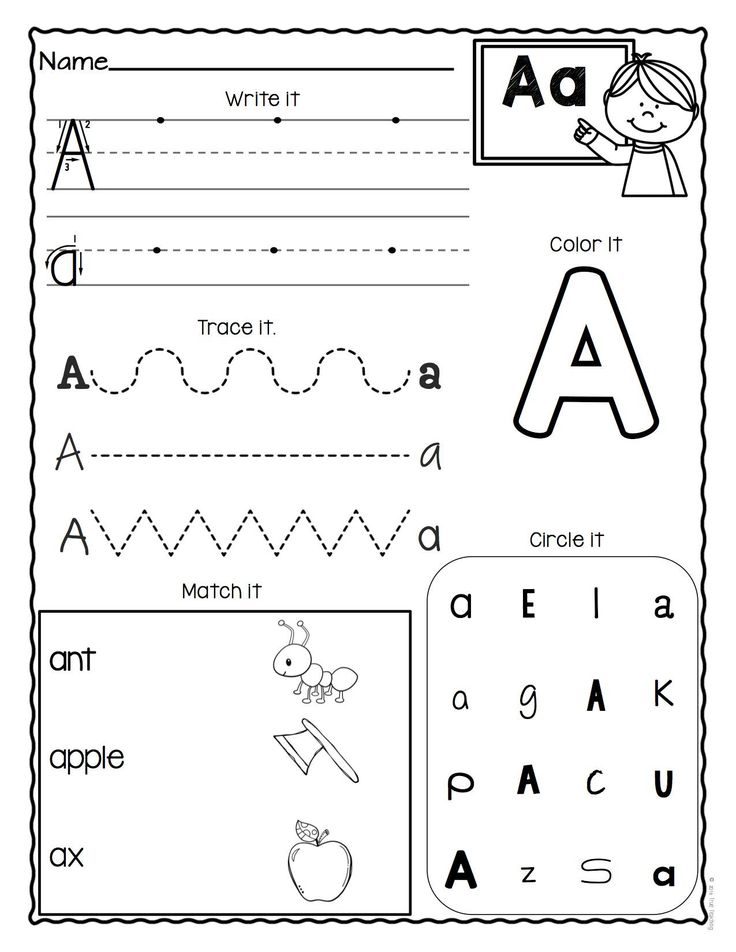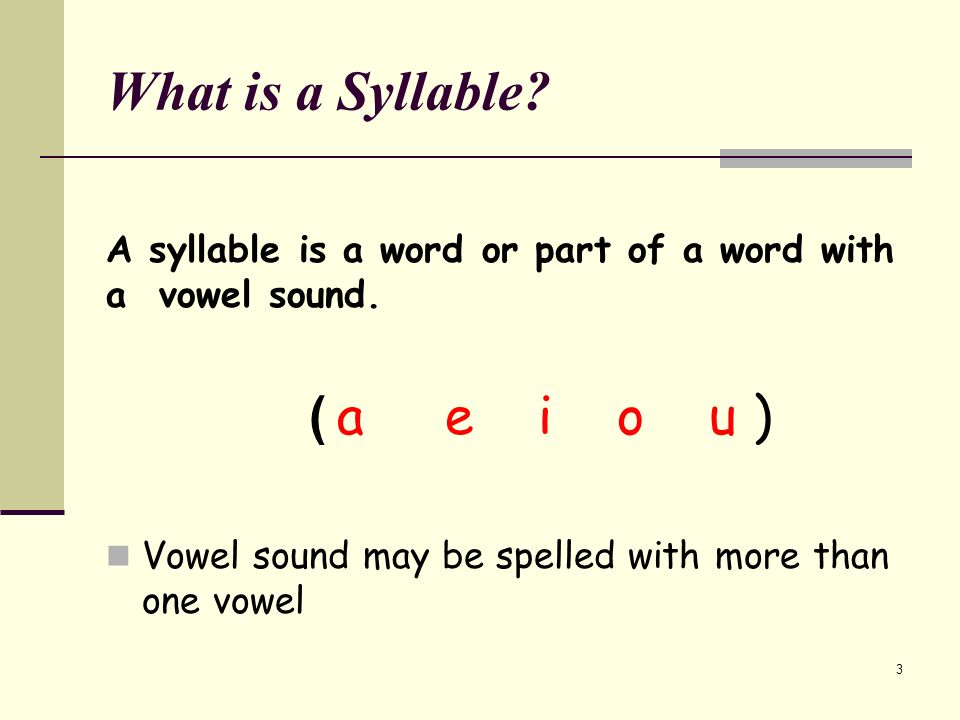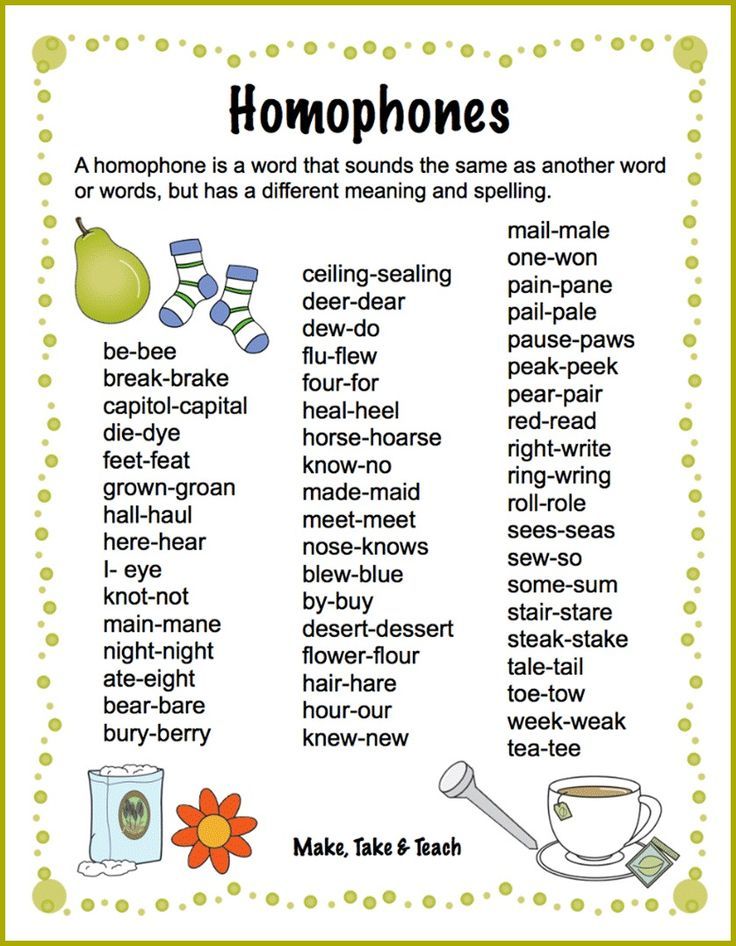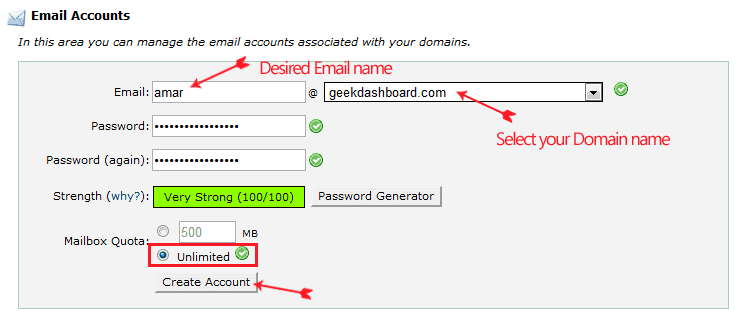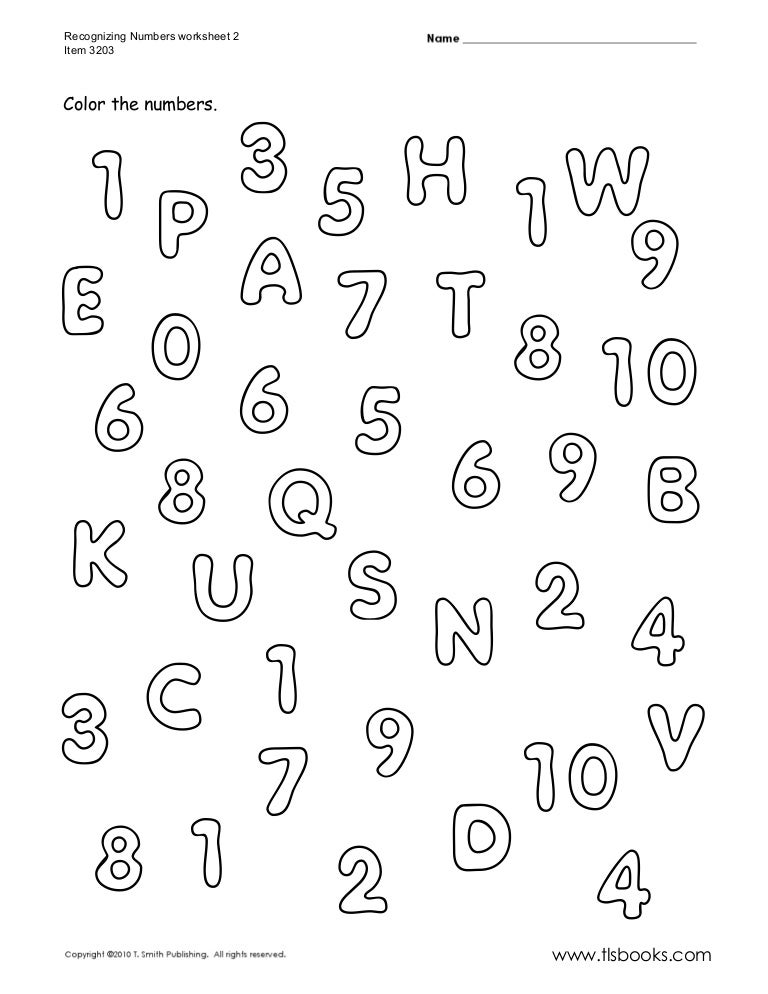How to teach preschoolers numbers
How to Teach Kids Numbers: 10 Ideas for Parents
9 shares
- Share
- Tweet
Learning and understanding numbers is a skill preschoolers and kindergarteners have to master. Exposure starts early – numbers are everywhere! – but when it’s time to teach kids numbers, you might wonder how you can make it fun and interactive.
Learning should always be fun after all!
Teaching numbers to your child is simple. Most children pick up numbers quicker than letters, and since they see numbers everywhere, it’s easy for them to figure them out. However, comprehension takes more time than recognition, so be patient!
Related: 16 Activities to Introduce Counting and Math to Your Toddler
This post may contain affiliate links for which I would receive a small commission on your purchase, at no additional cost to you.
When to Teach Kids Numbers?
Exposure to numbers starts early. How many times have you counted your babies toes aloud?
However, you can start introducing numbers to your child between 18 months and 2 years old. Around this age, they will enjoy number rhymes and number books. You may count simple objects like two apples or three cats.
Many kids pick up numbers one through five without parents needing to make too much effort because they’re used so regularly.
For example, ask your child to hand you one block or two cars. These simple daily tasks encourage comprehension without any added work for anyone!
What Age Should a Child Recognize Numbers?
Around the age of two years old, some children start to recognize numbers, but this is not a standard milestone. Some children recognize numbers and letters faster than others. So, don’t be surprised if it takes considerably longer for your child to recognize numbers.
Sometimes, it takes until four to five years old for kids to identify numbers on a regular basis. This shouldn’t concern you; sometimes, it takes longer for some kids, but they’ll catch on quickly.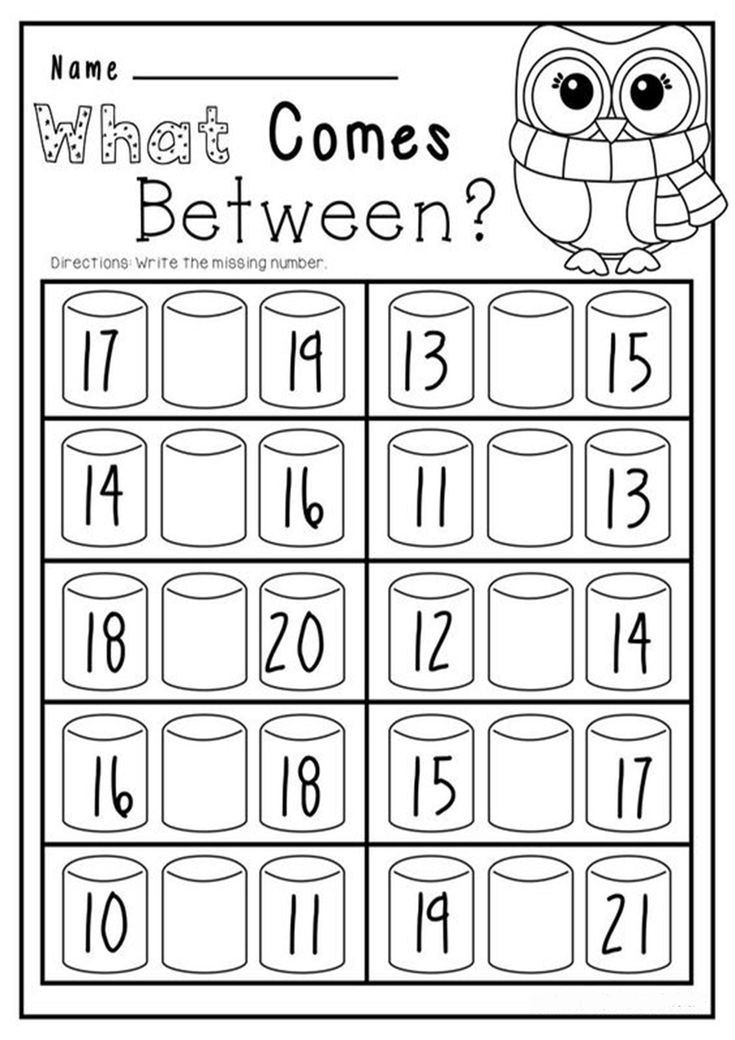
How to Teach Kids Numbers
Once you’re ready to teach kids numbers, here are some of my favorite tips and tricks to try. Learning numbers is easier and more fun than you imagine!
1. Use Number Rhymes and Songs
Number rhymes and songs are one of the easiest ways for preschoolers and kindergarteners to learn numbers. You might not realize you know a lot of number rhymes already. Here are some of my kids’ favorites!
- 10 Little Monkeys Jumping on the Bed
- The Ants Are Marching
- One Two Buckle My Shoe
- This Old Man
- Three Blind Mice
When you sing these songs and rhymes, make sure you show your fingers so your child can relate the number to however many fingers you hold up.
2. Get Number Toys
Kids learn best when playing, so hands-on number toys are one of the best ways for kids to learn their numbers. It gives them opportunities to manipulate objects and make connections in their brain with the numbers.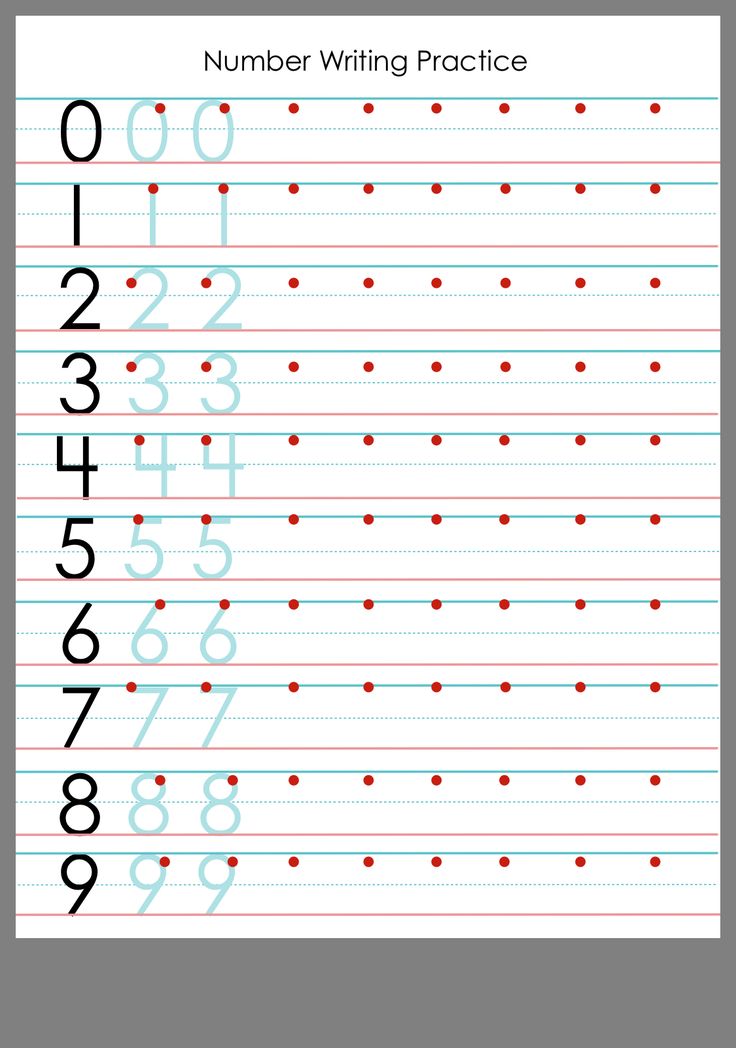
Numbers are an abstract idea by themselves, but preschoolers and kindergarteners learn best when they work with the concrete. Math skills need to start off as concrete before moving to the abstract, so number toys give kids the chance to see, touch, and understand what numbers look like before needing to work abstractly.
When I saw number toys, I don’t mean toys that count out loud. Instead, you need to work with your child to help them learn.
Here are some of my favorite number toys for preschoolers and kindergarteners.
1. Prextex Find and Match Number Eggs
This toy has eggs that come apart and kids have to match the eggs together. Not only are these little Easter eggs actual egg size, but this helps with color recognition skills in toddlers.
2. Melissa & Doug Self-Correcting Number Puzzles
I’m a huge fan of all things Melissa & Doug for educational toys. These self-correcting number puzzles have the number on one side and objects on the other puzzle piece, working from one to 20.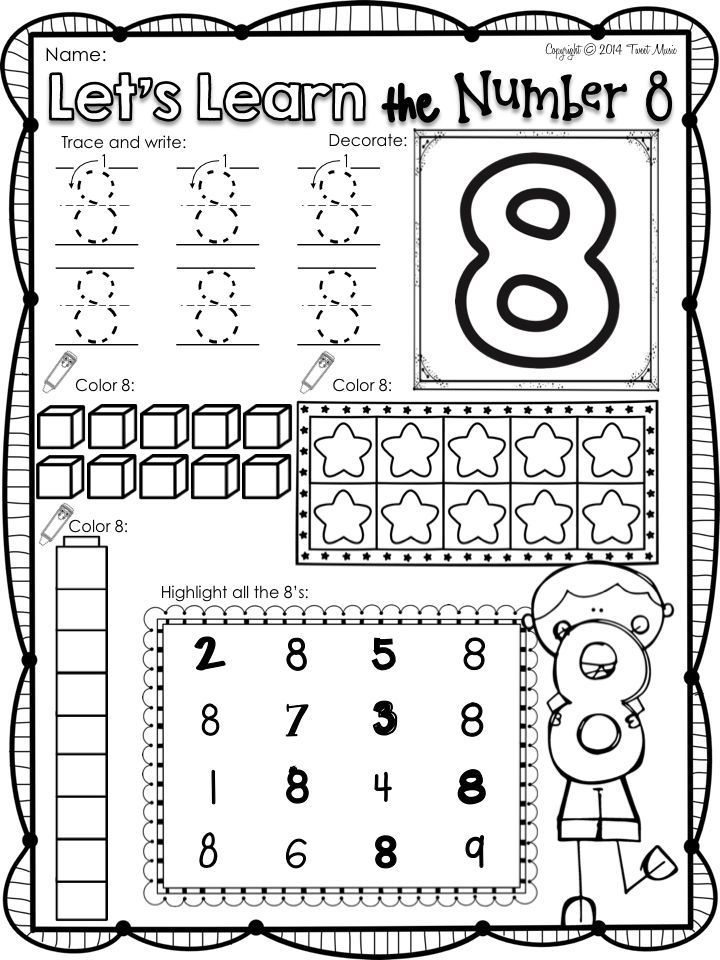 I also love the M&D includes a storage box so the puzzle pieces stay together.
I also love the M&D includes a storage box so the puzzle pieces stay together.
Your child has to match the number with the correct number of objects and put the puzzle pieces together.
3. Learning Resources Smart Counting Cookies
Learning Resources understands how kids learn, and these smart counting cookies help kids learn to recognize, count and compare numbers with the soft cookies. The cookies have raised chocolate chips so kids can count how many chips are in each cookie. Then, they have to the matching number cookie.
4. Montessori Peg Number Board
This number board is a great way to connect numbers and objects for your preschoolers. First, they have to identify the number on each board, and then, they have to put the correct number of sticks on each board. It’s self-correcting because there are only the correct number of holes for each number.
5. Learning Resources Smart Snacks Number Pops
Here is another awesome math toy – Learning Resources Number Pops.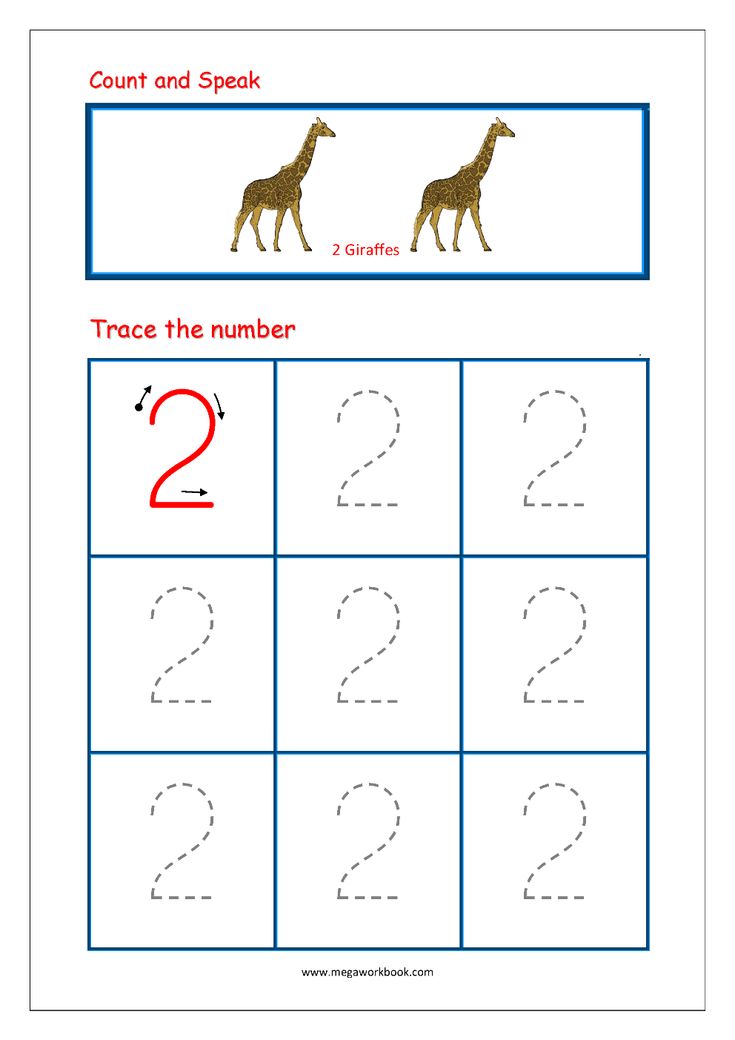 Kids work on early math and fine motor skills. They have to match the removable number cover with the pop with the correct number of dots. The set works for numbers one to ten.
Kids work on early math and fine motor skills. They have to match the removable number cover with the pop with the correct number of dots. The set works for numbers one to ten.
3. Work with Number Puzzles
Puzzles is another way to encourage kids to learn and recognize their numbers. My kids love puzzles; they’re an easy way to combine play and recognizing letters and numbers.
My favorite number puzzle is the Melissa & Doug See-Inside Numbers Puzzle. It has little pegs making it easy to practice those grasping and fine motor skills.
4. Count Fingers and Toes
One of the easiest and best ways to teach kids numbers is to count fingers and toes. This is one of the best ways to work on numbers with toddlers.
Once you count their toes and fingers, start asking how many toes they have or how many fingers you are holding up.
5. Incorporate Numbers into Daily Life
You see numbers all the time, so incorporate those into your daily life. Point them out to your child as you dial a phone number, look at the clock, or numbers on your shopping list.
Point them out to your child as you dial a phone number, look at the clock, or numbers on your shopping list.
If your child helps set the table, have them give each plate a fork and count them as they go. You can count pieces of fruit on their lunch plate or goldfish in their snack bag.
Numbers are everywhere!
6. Read Number Books
I think books are a great way to teach kids anything – they’re a gateway for learning. Number books show kids numbers and corresponding objects, and they help expose your child to different ideas about numbers and early math skills.
Believe it or not, you can find all sorts of amazing number books to expose your child to counting. They won’t even realize they’re learning!
Here are a few of my favorites.
- Five Little Monkeys Jumping on The Bed by Eileen Christelow
- One Fish, Two Fish, Red Fish, Blue Fish by Dr. Seuss
- Counting Crocodiles by Judy Sierra
- One Fox: A Counting Book by Kate Read
- Blue Ridge Babies 1, 2, 3: A Counting Book by Laura Sperry Gardner
- My First Counting Book by Lilian Moore
7.
 Use Printables
Use Printables Printables are one of my favorite learning tools to use because they’re so versatile, and you really can find printables for everything.
Whether you want to work on number recognition, writing numbers, or putting numbers in order, you can find printables – free and paid – that do just that!
The best place to get started with counting and number printables is right here. I have some free ones available for parents to use.
- Thanksgiving Counting and Numbers Printables
- Halloween Counting Printables: Free Printables for Preschoolers
- Turkey Counting Feathers Activity Free Printable
- Free Printable Winter Counting Clip Cards for Preschool
8. Point Out Numbers
Numbers are everywhere! You see them on vehicles, signs, and everywhere else. When you’re at the store, you see signs that list of the cost of items – numbers.
When you drive down the street, you see speed limit signs.
Numbers are everywhere, and the more you point them out to your child, the more kids start to recognize them.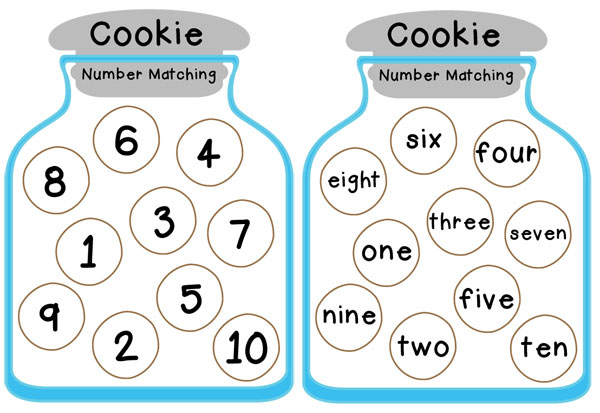
9. Connect Dots for the Order of Numbers
Not only do you need to teach kids numbers, but you also have to teach the order of the numbers. One of best ways to do this is to connect dots.
You can print connect the dot printables or make them yourself at home! Use chalkboard to make a shape with numbered dots, and have your child connect the dots to discover the shape. Always let your child color the shape after they complete the order of the numbers.
10. Use Flashcards
Flashcards are great for some kids, and they’re one way to introduce numbers zero to nine to your child. You can use flashcards in many ways like having your child arrange the numbers in the correct sequence, or use them to play number Go Fish.
I use Go Fish as a way to teach kids numbers and letters, and all kids love it!
All parents have to teach kids numbers, but it’s easier than you think! Try these fun activities to get your child interested in numbers, and, most importantly, remember to incorporate learning letters into their daily lives.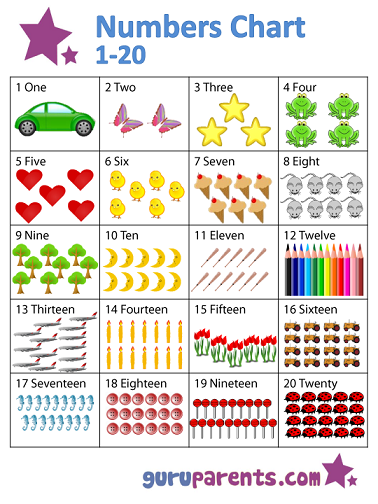 They pick up numbers so well!
They pick up numbers so well!
Related posts:
5 Tips on How to Teach Numbers to Kids in Kindergarten
Site Search
Site Search
Shop Now
Teaching Tips
January 7, 2021
0
4 min
One of the first lessons we learn as kids is how to count numbers. Opening the door to mathematics, learning numbers is a crucial skill to master in the earliest years of education.
When teaching numbers, many strategies can help kids feel confident in counting independently. It’s not only important to establish the ability to count. Building an understanding of the numbers will help kids develop math skills in the future. Teaching numbers doesn’t have to be a daunting task. With a patient approach and an engaging lesson plan, you will soon have your kids excited to count!
When Should Kids Start to Learn Numbers?
Children are exposed to numbers at the very beginning of their lives, whether that be with pattern recognition or the ability to discern quantity amounts.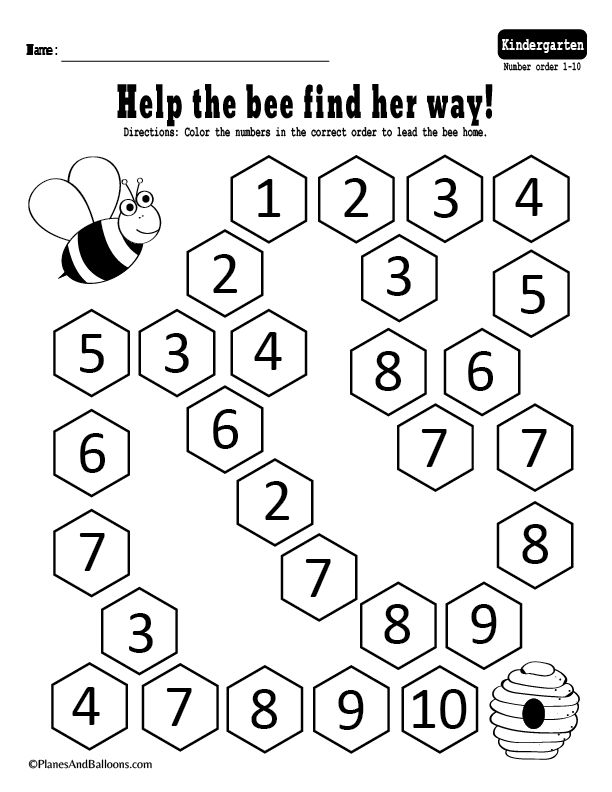 That being said, children can begin learning their numbers as early as preschool. Since math is all around us every day, there are many opportunities to encourage number retention among kids who are not confident with their numbers.
That being said, children can begin learning their numbers as early as preschool. Since math is all around us every day, there are many opportunities to encourage number retention among kids who are not confident with their numbers.
5 Tips for Teaching Numbers
At Learning Without Tears, we know that there are numerous strategies for teaching numbers to young children. We believe that with a proper plan in place, every child can feel confident about their knowledge of numbers. Consider Learning Without Tears’ top five tips for teaching numbers to set your little ones up for success in mathematics.
1. Begin with Number Formation
There are only ten characters that you need to teach or remediate (0-9). Think about that, just 10.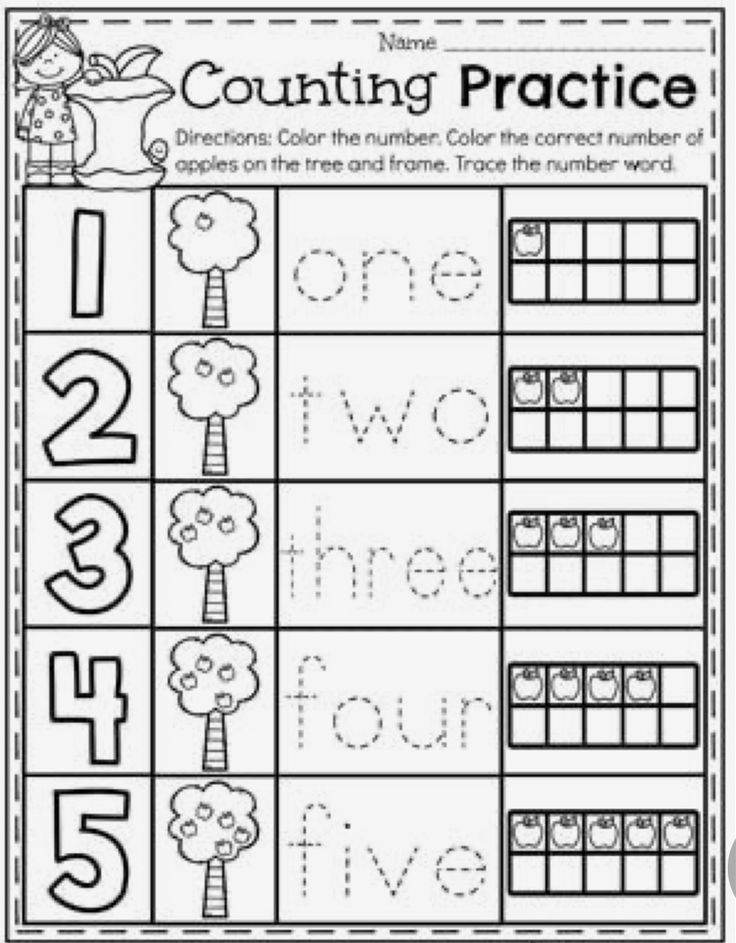
Many of our children have names with more than 10 characters, especially when you consider writing their first and last name. It is much easier to teach ten numbers instead of 26 lowercase letters and 26 uppercase or capital letters. Also, numbers do not come in lowercase and uppercase. They are just one size. This makes teaching numbers for the first time or remediating numbers very easy as they are all made of the same size.
Click here to download a free copy of our Number Formation Chart.
2. Start at the Top with Numbers
So many children struggle with where to start letters or numbers when they are writing. They generally form letters and numbers inconsistently, sometimes starting at the top, the next time starting at the bottom, and the next time maybe starting in the middle.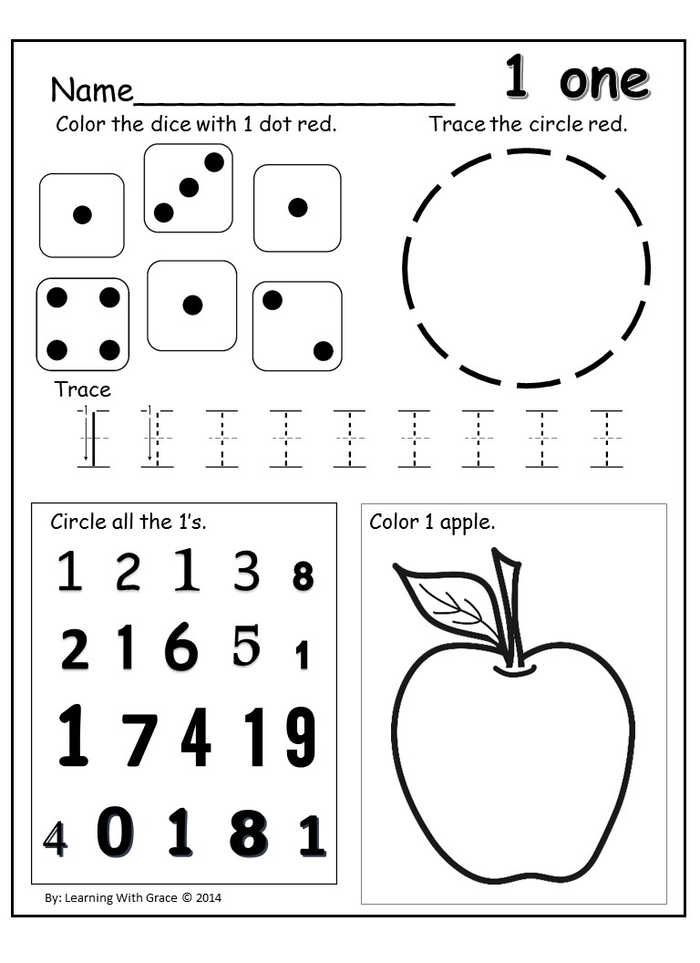 The results of these inconsistent start patterns and habits are usually letters or numbers that are poorly formed and difficult to recognize or to read.
The results of these inconsistent start patterns and habits are usually letters or numbers that are poorly formed and difficult to recognize or to read.
All numbers start at the top. This is easy to remember. With the Handwriting Without Tears approach, we have a song, “Where Do You Start Your Letters.” Well, one of the verses of that song goes, “Where do you start your numbers? At the top!” Yes! All numbers start at the top.
If you are not familiar with our song, you can find it on our albums, our workbooks, on our website, and as part of our Interactive Teaching Tools. The kids really love this song. We have a short version and a longer version that really gets the kids moving as they learn about start, top, and bottom. The song even teaches them how to “shake it in the middle,” which is so much fun for little kids. Please be sure to check it out. You will love this song, too!
You will love this song, too!
3. Create Number Stories for Sequence
Consider how numbers are actually formed during the writing process. We refer to this as start and sequence. We now know that all numbers start at the top. But what happens next? We call this sequence.
To help young children learn to write numbers, we have developed what we call Number Stories for each one. These are clever ways to help our young children remember the correct way to form their numbers. We use reference words about where the number will start, followed by sequence reference words to build the automaticity of forming the number.
These stories are found in our student and teacher books, on our website, and as a part of our Interactive Teaching Tools.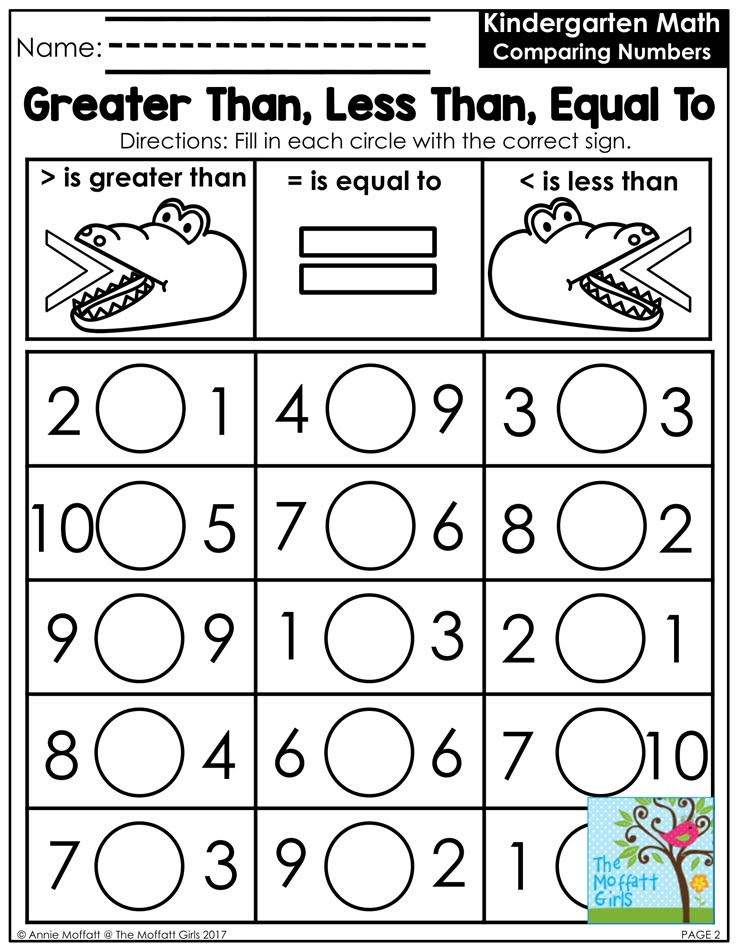 Our number formation pages are free and can be found on our website. We even have them in Spanish!
Our number formation pages are free and can be found on our website. We even have them in Spanish!
4. Use Friendly Terminology
At Learning Without Tears, we use the terms Big Line, Little Line, Big Curve, and Little Curve. All of the numbers can be made with these four basic strokes or shapes.
For our younger children, we build numbers using our Handwriting Without Tears Wood Pieces. As they progress and learn to hold a writing tool, we use small chalkboards and chalk to teach proper number formation. Then we introduce small crayons and Gray Blocks to provide a visual guideline for not only the formation of the number but for size and placement as well. Lastly, they will use a pencil and the Gray Blocks to produce numbers, eventually transitioning to a single baseline in their workbooks or on paper.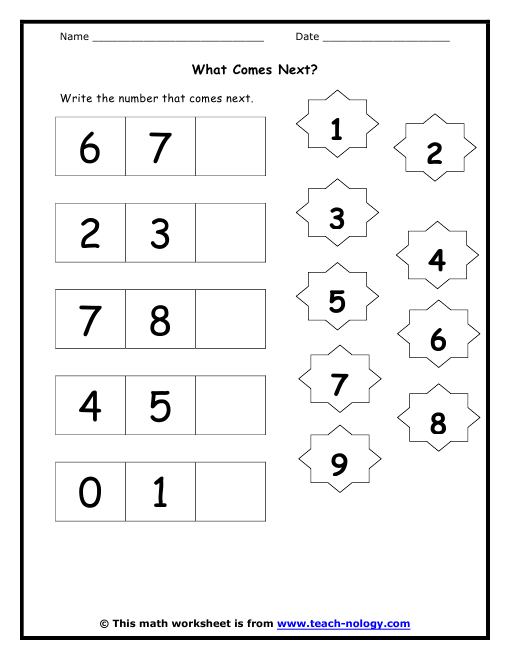
We even have an app for the iPad called Wet-Dry-Try to help teach, practice, and eventually master number formation. This is a great way to incorporate technology and add additional multisensory techniques to enhance learning opportunities for children. The Wet Dry Try app can also be used with capital and lowercase letters.
Check it out! Your children will really enjoy using this tool.
5. Teach Number Placement
The placement of numbers on paper is also something we need to teach and address during our summer number lessons. I have already mentioned some of our techniques and strategies previously.
All numbers are to be correctly placed on a single baseline.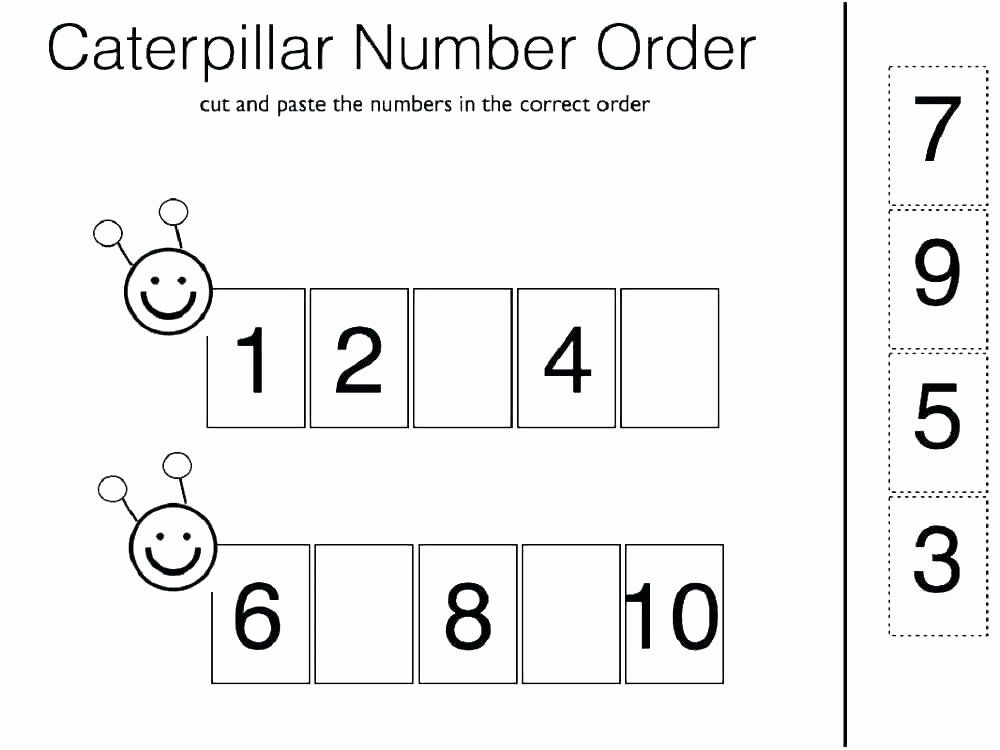 With young writers, we use the Slate Chalkboard to provide a strong visual and tactile representation of the baseline. This is also incorporated into the Wet-Dry-Try app for iPads.
With young writers, we use the Slate Chalkboard to provide a strong visual and tactile representation of the baseline. This is also incorporated into the Wet-Dry-Try app for iPads.
When the children transition into a student workbook, they have a visual of the Gray Block to guide placement. The next step is to place the numbers, starting at the top, onto a single baseline. Eventually, on math papers, the student will not have a line to place numbers on. At this level, they will “see” the line in their minds and place the numbers on it. This takes a while and a great deal of practice for children to be able to do this. Until then, use chalkboards, tablets, Gray Blocks, and lines to teach and remediate the placement of numbers.
Learning Without Tears Can Help Teach Numbers!
Our goal at Learning Without Tears is to help provide trustworthy academic resources and products to parents and teachers to help prepare children for growth and success.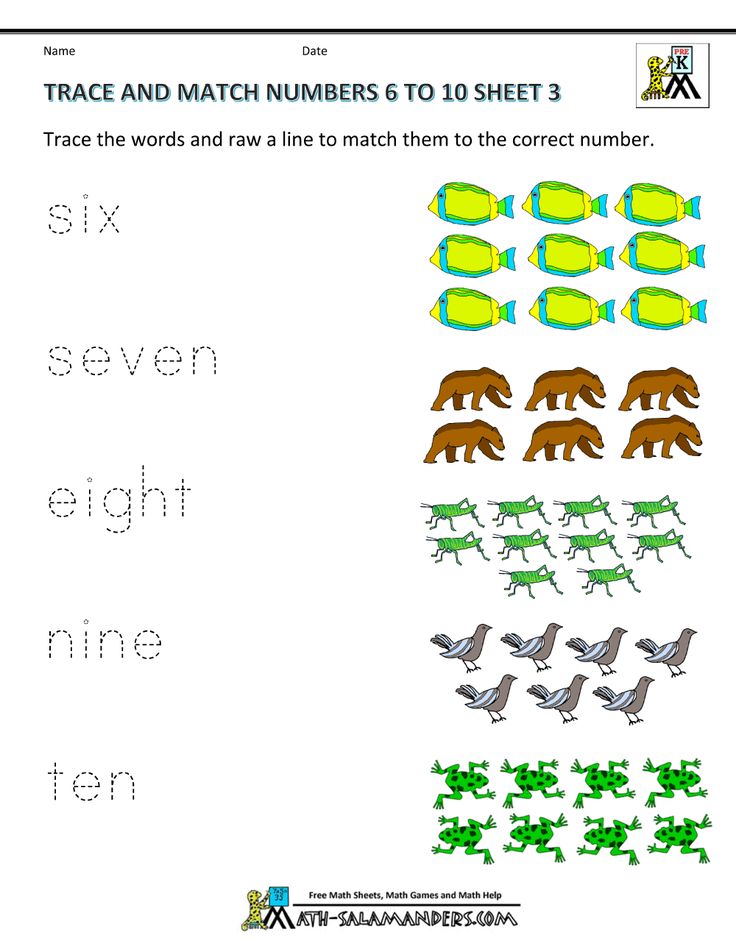 We know that every child can be taught their numbers, but we want to make teaching numbers an engaging and worthwhile experience. As one of the first building blocks for mathematics and future learning, teaching numbers is a lesson that should be approached with references and support that we at Learning Without Tears are more than happy to provide.
We know that every child can be taught their numbers, but we want to make teaching numbers an engaging and worthwhile experience. As one of the first building blocks for mathematics and future learning, teaching numbers is a lesson that should be approached with references and support that we at Learning Without Tears are more than happy to provide.
If you’re curious about the best way to learn how to teach numbers, Learning Without Tears has everything you need. We provide an extensive collection of educational products and resources that will have your child counting in no time. With a diverse selection of items to help students of all learning types, we’re confident that every child can benefit from the enriching teaching tools offered at Learning Without Tears. Explore our selection of free resources today to learn more!
Related Tags
Teaching Tips Multisensory Learning Home Connection
Teaching Tips
10 Ways to Celebrate National Handwriting Day
January 9, 2023
0 5 minutes
Teaching Tips
Making the Most of Your Funding Options
September 9, 2022
0 2 mins
Readiness, Summer, Teaching Tips, Multisensory Learning
5 Ways to Support Your Students this Summer
June 7, 2022
0 5 minutes
There are no comments
Stay Connected and Save 10%Sign up for our newsletter and get the latest updates, Classroom tips & free downloads.
Comments
90,000 how to teach a child to figures at 3Article
- The best age
- Rules for the organization of lessons
- Stages of the training process
- Classes with didactic materials
- Variety of exercises
- Use of various forms of work
Active development of the child should occur from an early age, therefore, at the age of 3, it is worth starting to learn numbers, using various games, manuals, and didactic materials for this purpose. Depending on the abilities of a particular baby, you can master counting up to 10 or even up to 100, the main thing is that everything is clear to the baby and he enjoys the lessons. nine0003
The best age
There is a well-known phrase “after three it's too late”. Indeed, scientists have proven that babies at 2.5-3 years old have a unique ability to memorize, which weakens with age. Therefore, three-year-olds are quite capable of making their first trip into the world of mathematics and learning numbers, this will help their development and will be an excellent method of preparing for school.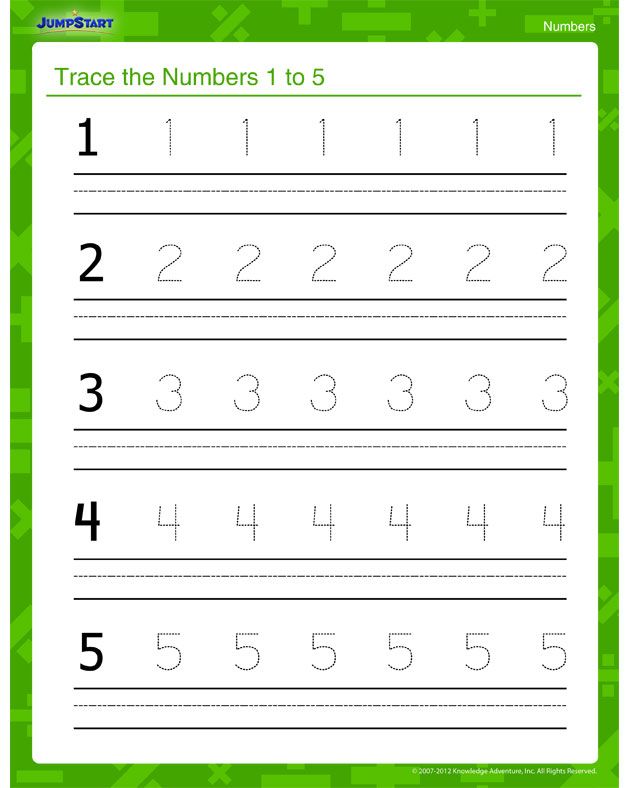 In addition, working with didactic materials, such as Kuizener sticks, improves fine motor skills, which, in turn, has a beneficial effect on speech. nine0003
In addition, working with didactic materials, such as Kuizener sticks, improves fine motor skills, which, in turn, has a beneficial effect on speech. nine0003
That's why the first lessons in arithmetic can be done as early as 3 years old. However, if the baby is not yet ready for this, it is worth giving him time, postponing the start of lessons until 4-5 years old.
Rules for the organization of the lesson
To ensure that acquaintance with numbers does not turn into “catharsis” for the child, the following principles of work should be used.
- Learning by playing. Regular guests in the classroom should be toys, dolls, fictional fairy-tale characters. nine0005 Praise is the best motivation, and scolding the baby is not worth it. It is important for parents to remember that the child does not understand why adults are unhappy with him, because he really tried. This attitude can permanently kill his desire for learning. Therefore, strictness should be forgotten.
- Classes should be conducted continuously, so you can put large bright cards with numbers, number series on the wall in the baby's room. The main thing is that the pictures should contain not only the number itself, but also the amount indicated by it. For example, a deuce and two oranges. nine0006
- Combine different activities. So, modeling figure-figures from dough or plasticine not only helps their assimilation, but also contributes to the development of fine motor skills.
- You should not overload the baby with new knowledge, for one day of acquaintance with one new number is enough. When he has learned to clearly imagine that 1 is one subject, and 7 is seven, you can start learning to count.

Compliance with these simple rules will help parents not only pass on useful knowledge to their little ones, but also enjoy the lesson itself and communication. nine0003
Stages of the learning process
It is not easy to teach a child numbers, this matter should be approached carefully and seriously - so arrange the work in such a way as to follow the logic “from simple to complex”.
There are several stages of work.
- Acquaintance. The parent prepares the material in advance: a card, which shows, for example, one or two, selects the required number of identical items. After that, he explains that “today we are getting acquainted with the number “One”, it denotes one object. Here, look, there's only one bear." How many bears do you see? nine0006
- Memorization. Offer the child various tasks that will help him remember what the unit looks like and what it means. Let's help him a little. Tasks should be of two types: first, those that help to correlate the number with a specific amount, and then those aimed at remembering the appearance of the number.
- Fastening. The next "portion" of tasks that the baby must already complete completely independently.
- New material.
It is necessary to emphasize the connection with the past, show one bear and ask how many bears the child sees, then put the second one up, say that there are now two bears. You should not overload the child, acquaintance with each subsequent figure should be carried out only when the previous one is well learned. If parents do not have the opportunity to buy the same toys, cards, sweets, fruits, vegetables will come to the rescue. When deciding where to start, the exercises must be selected in such a way that each of them is accessible to the baby. nine0003
You should not overload the child, acquaintance with each subsequent figure should be carried out only when the previous one is well learned. If parents do not have the opportunity to buy the same toys, cards, sweets, fruits, vegetables will come to the rescue. When deciding where to start, the exercises must be selected in such a way that each of them is accessible to the baby. nine0003
Activities with didactic materials
Thanks to their variety, games with specially designed sets, such as Cuisener's sticks, are suitable for children from 3 to 5 years old. You can choose those options that best correspond to the level of development of the crumbs.
Tasks for the following templates are suitable for kids.
- Find three yellow sticks.
- How many sticks do I show?
- Find two blue sticks and four yellow sticks. What more? nine0006
- Parent lays out a square of sticks and then asks how many sticks did I use to create the figure? The opposite task is also possible: fold the figure using only 5 (or any other number) sticks.
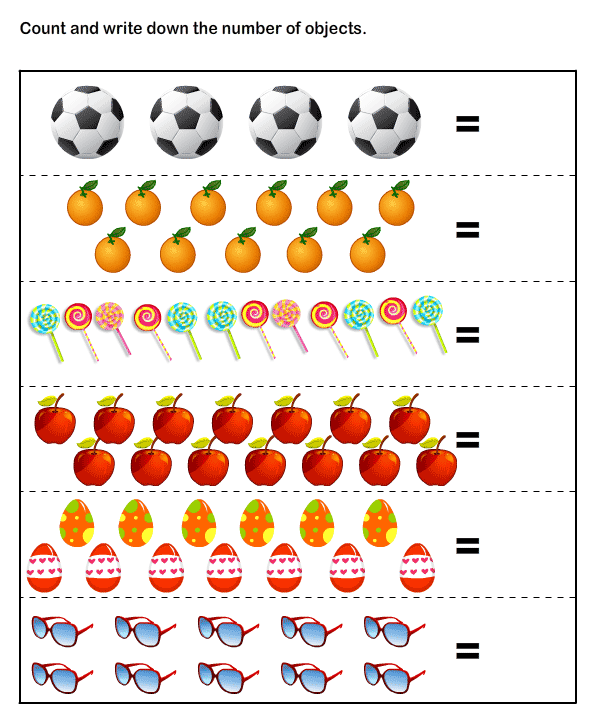
Doman's card technique has proven itself well, which helps to remember the appearance of the number and its meaning. The tasks are also simple.
- Mom shows a card, the child's task is to understand what number is shown on it, and find its pair - another card on which the required number of objects is drawn. nine0006
- Then vice versa - the mother chooses a card, for example, with two bears, the child must find a pair for her - "2".
- Mom shows a card with three hares and asks the child to find the number of objects in the apartment that is shown in the picture. The preschooler can bring her three apples.
Expert's opinion
Tanya Okhrimenko, educational psychologist: It's great to learn numbers with a child in a game. And you can do it not only at home. For example, going up the stairs and counting the steps. The main thing is that if the child does not remember them, do not worry, let a little time pass and everything will be fine with him.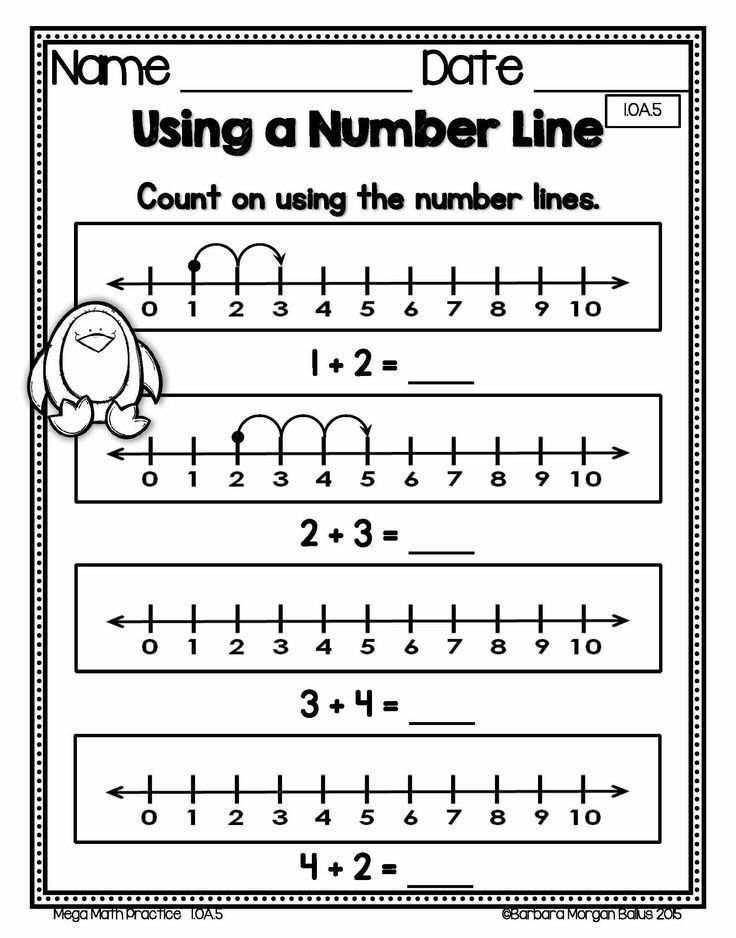 For example, what a child remembers for weeks at 3 years old, at 5 he will be able to remember in a matter of minutes if he wakes up with “cognitive interest”. nine0003
For example, what a child remembers for weeks at 3 years old, at 5 he will be able to remember in a matter of minutes if he wakes up with “cognitive interest”. nine0003
You can buy these cards or make your own.
For preschoolers who are well versed with the first ten, you can also use Zaitsev's number tape, which is a series of numbers from 1 to 99. You can place it on the wall so that the manual is always in front of your eyes. Tasks may vary.
- An adult describes a number: two tens, three ones. The task of the child is to understand that we are talking about 23, and show the number on the tape. nine0006
- Whose number is greater. Mother and child each take one card with numbers written on it. The child must understand whose number is more important, and then find both on the tape.
- Find the age of each family member on Zaitsev's tape.
All this will help preschoolers form the correct idea of numbers.
A variety of exercises
There are a large number of exercises, the implementation of which will help a 3-year-old child to get acquainted with numbers, remember how they look and what the number means.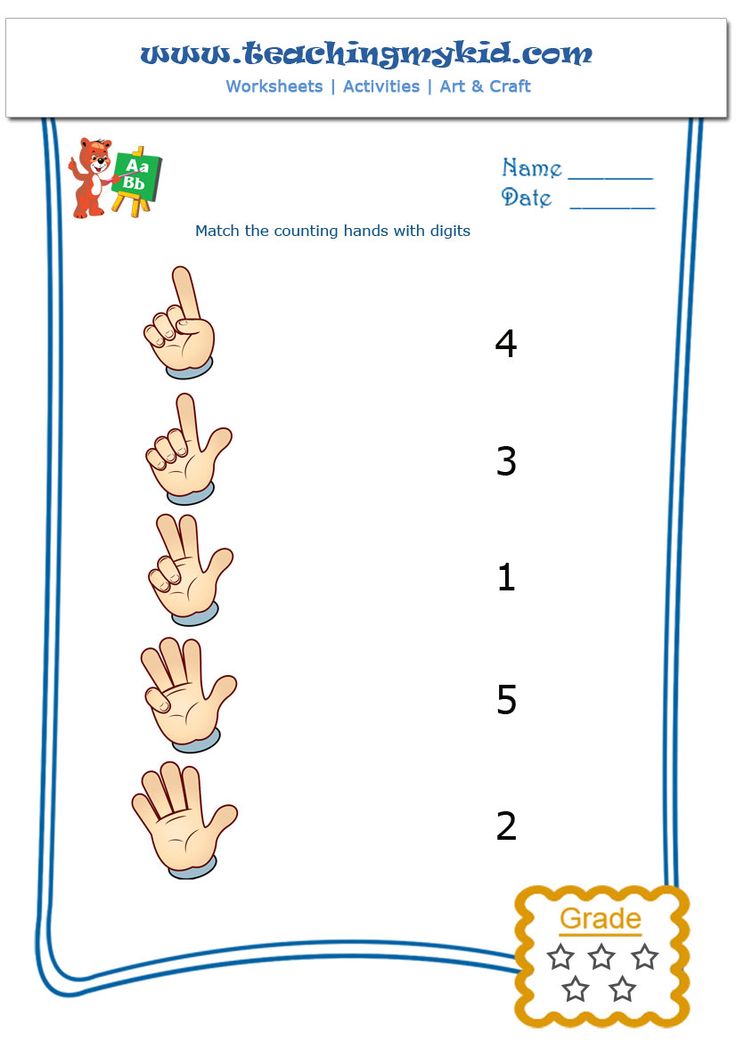 Some of them can be used at the age of 4 years. You need to start with what the child knows well. nine0003
Some of them can be used at the age of 4 years. You need to start with what the child knows well. nine0003
- Sample. The mother puts a dish in front of the child, on which fruit or sweets lie, and asks him to score, for example, three pieces (for example, “give mother three sweets”). The second version of the task - the mother herself puts aside a certain amount of sweets and asks the child to count them, and then say how many sweets are in the pile.
- Find the number. An adult asks a preschooler to show him all the units that are presented on a pre-prepared poster. This will help the baby remember what the number looks like. nine0006
- Find a couple. The parent prepares two series of pictures: one shows large numbers, the other shows illustrations for fairy tales familiar to children. For example, two Ivans, three bears, seven Simeons, and so on. The child's task is to match the picture and the number.
- Count your fingers (after getting to know the five).

- Story-thematic game "Houses". The parent draws a certain number of houses on a piece of paper in advance and asks the child to bring as many toys so that all of them can be “populated” and not a single empty house remains. nine0006
- Mushroom game. The parent places “mushrooms” (pictures, cubes) in the room in advance, the child takes a basket with him and goes out to collect, having found the first one, he says “one”, the second - “two”, and so on.
There are a lot of games, so every day you should offer your child something new. You can also study at the computer, asking the baby to count the number of objects on the screen.
Using different forms of work
To make it easier for the baby to memorize the numbers, it is important to visualize each of them. There are several ways to do this. nine0003
- Print large pictures that depict the material being studied, and it is desirable that each number looks interesting, unusual (for example, a deuce in the form of a snake).
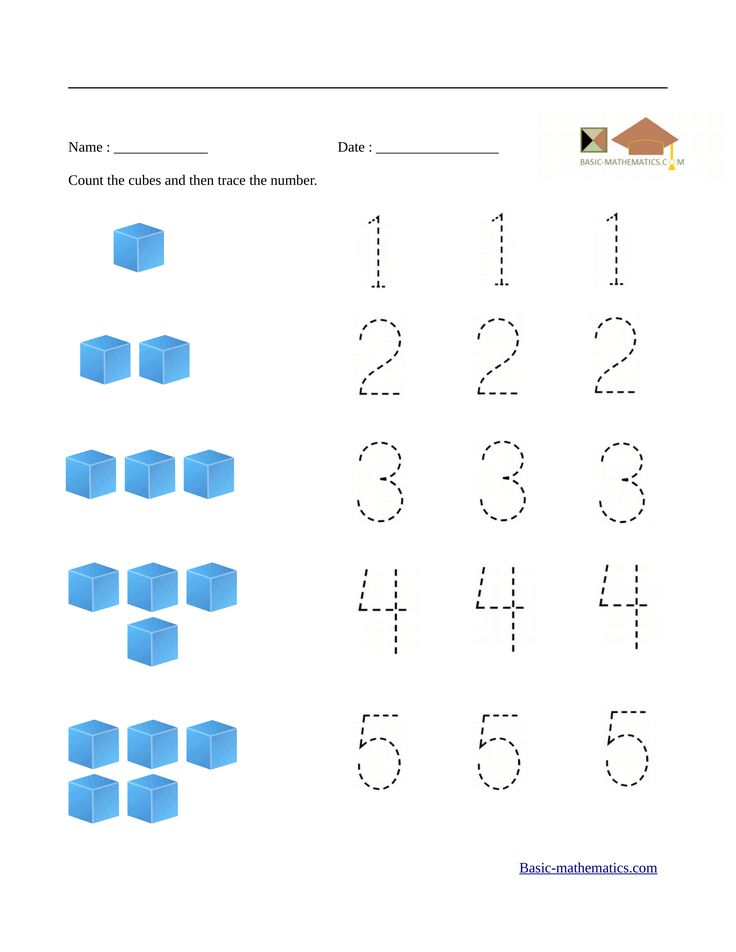 Invite the child to color the picture with bright pencils, felt-tip pens, paints.
Invite the child to color the picture with bright pencils, felt-tip pens, paints. - Another similar task is a coloring book, which shows the designated number (for example, five kittens) and there is a five next to it. The child paints the picture itself and the number, gradually memorizing. Over time, the task can be complicated: there is only a certain number of objects in the picture (4 apples), the kid paints them and prepares for the parent how many of them, what number to enter. nine0006
- The child will complete this task with pleasure: he will look for familiar numbers everywhere - on the street in the numbers of houses, buses, cars, on billboards. Impatient parents will be annoyed by this desire, and wise mothers and fathers themselves will offer the baby a fun task - who will find more twos or ones during the walk. And, of course, an adult must definitely lose.
In order for a child to quickly comprehend the basics of counting, one should constantly say counting rhymes with numbers, for example: “One-two-three-four-five, we are going for a walk with you. ” Such a simple text can be spoken before each walk, after a few times the child will be able to repeat it himself. Board games will also be useful: by throwing a die and counting the required number of steps on the playing field, the child will quickly learn to count. nine0003
” Such a simple text can be spoken before each walk, after a few times the child will be able to repeat it himself. Board games will also be useful: by throwing a die and counting the required number of steps on the playing field, the child will quickly learn to count. nine0003
Learning numbers with children at 3-4 years old is a very real task, but you will have to show your imagination by offering the crumbs all new options for exercises. Patience is also extremely important, because it will not be possible to carry out the plan the first time - perhaps some number will have to be given several lessons. And this is normal, because each baby has its own level of development.
Olga Shumskaya
Chief editor of the Razvivashka Online project on early childhood development
About the expert
Olga is an active mother who is passionate about child development.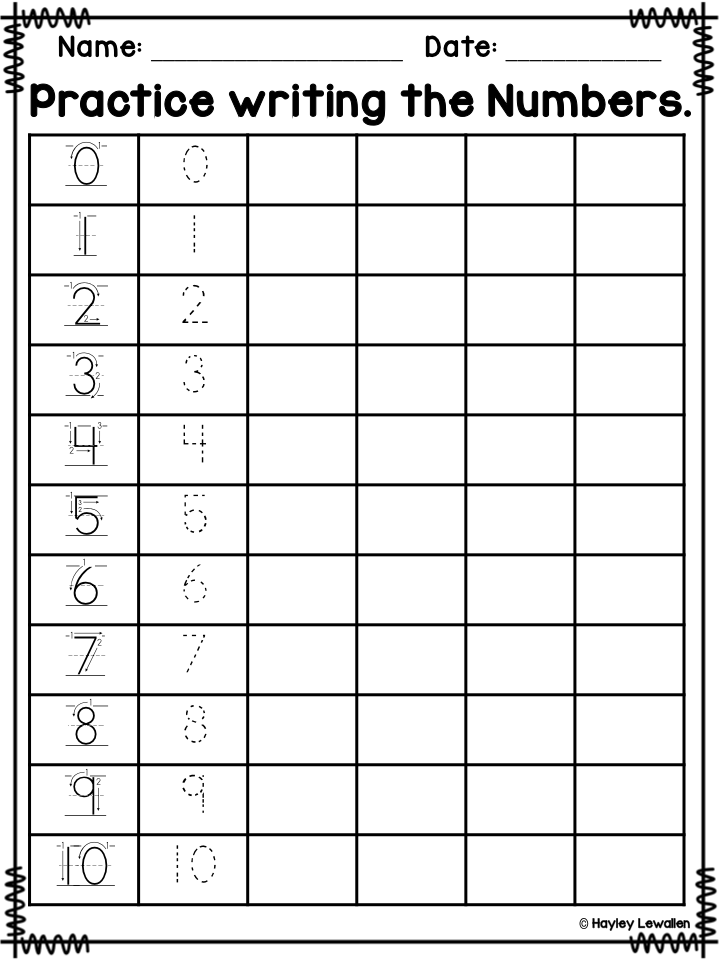 Author of a course on developmental care and educational games, cards, author and editor of articles on early development and features of child neuropsychology.
Author of a course on developmental care and educational games, cards, author and editor of articles on early development and features of child neuropsychology.
Share this post on social networks!
What kind of math games do your kids like? Please share until what date your children count and indicate the age.
Similar articles nine0003
More articles
New video on the channel!
Development by age
0-6 months
6-12 months
nine0002 1-2 years2-3 years
3-4 years
4-5 years old
nine0002 5-6 years6-7 years
How to teach a child to count
1839
Learning numbers with a child and teaching him to count is not an easy task.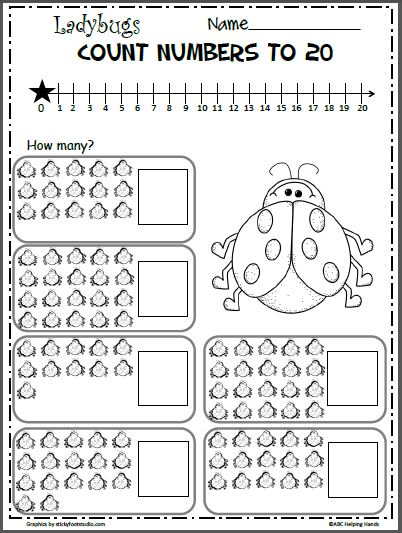 But any parent knows that you need to get acquainted with mathematics at a preschool age. If a kid at 5-6 years old masters the composition of the number and counting within ten, then it is more likely that at school it will be easier for him to cope with tasks. nine0003
But any parent knows that you need to get acquainted with mathematics at a preschool age. If a kid at 5-6 years old masters the composition of the number and counting within ten, then it is more likely that at school it will be easier for him to cope with tasks. nine0003
How to interest a child in mathematics?
First, follow the basic rules:
- 1. It is better to learn numbers and numbers not at the table, but in the game or immediately in practice. For example, have the child count the ingredients for a cake or a button on a shirt.
- 2. Practice when the baby is in a good mood. Try to evoke positive emotions in him. So the information is better remembered.
- 3. First, choose easy examples so that the child can cope with them. And when he successfully masters the first task, he will definitely want to repeat the success. At the same time, do not forget to praise the child. nine0017
- 4. Practice constantly, each time using something new.
 This is how you maintain interest and form a habit.
This is how you maintain interest and form a habit. - 5. If the child fails to solve the task - do not get annoyed, but try to explain in practice. After all, the main thing in 5 years is not to learn the basics of mathematics, but to form an interest in studying it in the future.
How to learn numbers:
Draw and hang in the child's room a number series from 1 to 20. It will always be in front of your eyes and will be remembered. Play the game of "jumping finger": point your finger in a chaotic order of the numbers from this row and ask for a number. Draw separate cards with numbers from 1 to 20 and ask the child to name them. In the first case, the baby remembers the ordinal arrangement of numbers, and in the second, he learns to recognize them randomly. nine0003
Make these cards: draw a number on dark cardboard with PVA glue, dip in semolina and dry. We work with these cards like this: the child circles the number with his finger as it should be written according to the rules, and pronounces the association aloud. For example, the number 1: first draw a tail with your finger from the bottom up, and then a straight stick down, saying: "Beak, leg." For numbers 2 - "Head, neck, tail"; 4 - "Back, seat, leg", etc. Come up with your own associations to better remember. In this exercise, children visually see the number, feel it tactilely, remember the spelling, speak out loud and reinforce it with associations. nine0003
For example, the number 1: first draw a tail with your finger from the bottom up, and then a straight stick down, saying: "Beak, leg." For numbers 2 - "Head, neck, tail"; 4 - "Back, seat, leg", etc. Come up with your own associations to better remember. In this exercise, children visually see the number, feel it tactilely, remember the spelling, speak out loud and reinforce it with associations. nine0003
You can get acquainted with the numbers and complete tasks online to consolidate knowledge on our website in the "Counting and Numbers" section.
How to teach counting:
In order for a child to learn to count, he must master the composition of the number, that is, understand that the number 5, for example, consists of a combination of the numbers 2 and 3, 1 and 4, etc. And for this, we first show the numerical value of the number 5 on real identical objects. For example, 5 is 5 spoons, apples, etc.
Play the game "Let's share" as often as possible. Take 5 sweets and offer to share between two.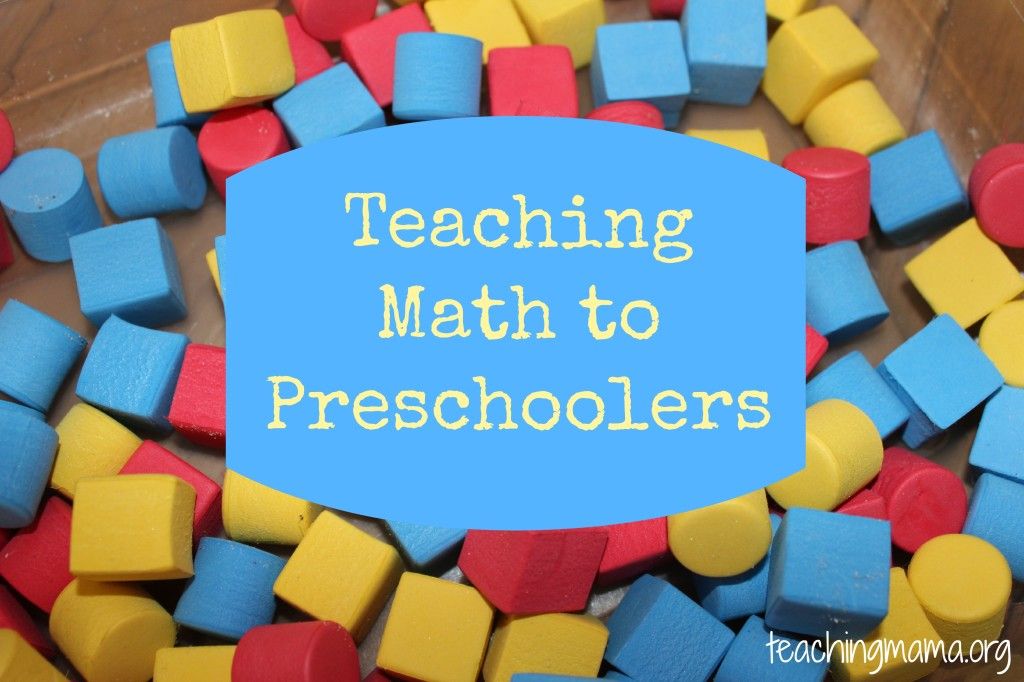 Ask the child: "How will we divide the sweets? How much will you take for yourself, and how much will you give to me?" Show that 5 sweets can be divided like this: 1 for mom, and 4 for baby, 2-3, 3-2, 4-1. And be sure to show that you are not counting empty numbers, but numbers that represent real candies. nine0003
Ask the child: "How will we divide the sweets? How much will you take for yourself, and how much will you give to me?" Show that 5 sweets can be divided like this: 1 for mom, and 4 for baby, 2-3, 3-2, 4-1. And be sure to show that you are not counting empty numbers, but numbers that represent real candies. nine0003
You can also play this game: take 5 buttons (or other small items), first show the child that there are 5 of them, count with your finger. Then hide your palms with buttons behind your back and ask the child: “If I have 2 buttons in my right hand, how many in my left?” And then invite the kid to ask you a riddle. Guessing, sometimes "make mistakes" - children love to "catch" adults on mistakes.
Having mastered the composition of the number, the child will easily understand the basics of addition and subtraction.
nine0002 Tasks for ordinal counting and comparison for preschoolers are recommended to be completed on the page "Assignments in mathematics for children 5-6 years old.